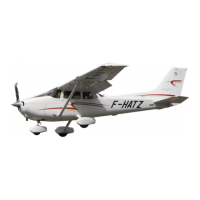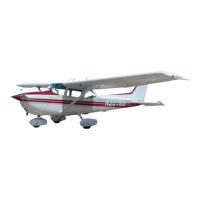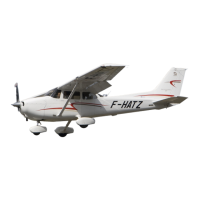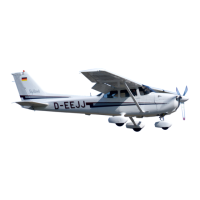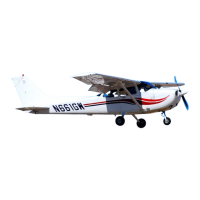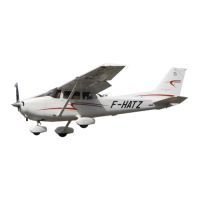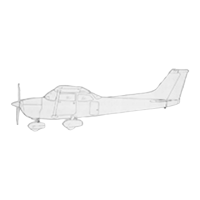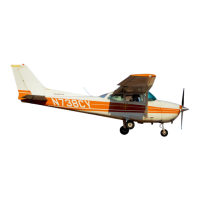SECTION 3
EMERGENCY PROCEDURES
I
ROUGH ENGINE
POWER (Continued)
OPERATION
ENGINE-DRIVEN FUEL PUMP FAILURE
CESSNA
MODEL 172S NAV
III
OR LOSS
OF
Failure
of
the engine-driven fuel pump will
be
shown
by
a sudden
reduction
in
the fuel flow indication (FFLOW GPH) immediately
before a loss of power while operating from a fuel tank containing
adequate
fuel.
I"
the engine-driven fuel pump fails, immediately set the FUEL
PUMP switch to the
ON
position to restore engine power. The flight
should be terminated
as
soon as practical
and
the engine-driven
fuel pump repaired.
EXCESSIVE FUEL VAPOR
Fuel vapor
in
the
fuel
injection system
is
most likely to occur
on
the
ground, typically during prolonged taxi operations, when operating
at
higher altitudes and/or
in
unusually warm temperatures.
Excessive fuel vapor accumulation
is
shown by fuel flow indicator
(FFLOW GPH) fluctuations greater than 1 gal./hr. This condition,
with leaner mixtures or with larger fluctuations, can result
in
power
surges, and if not corrected, may cause power loss.
To slow vapor formation and stabilize fuel flow
on
the ground or
in
the air, set the FUEL PUMP switch to the
ON
pOSition
and adjust
the mixture as required for smooth engine operation.
If
vapor
symptoms continue, select the
oppOSite
fuel tank. When fuel flow
stabilizes, set the FUEL PUMP switch
to
the OFF position
and
adjust the mixture as desired.
LOW OIL PRESSURE
If
the low
oil
pressure annunciator (OIL PRESS) comes
on,
check '
the
oil
pressure indicator (OIL PRES
on
ENGINE page or OIL
PSI
on
SYSTEM page) to confirm low
oil
pressure condition. If
oil
pressure
and
oil
temperature (OIL TEMP
on
ENGINE page or OIL
OF
on
SYSTEM page) remain normal, it is possible that the
oil
pressure sending unit or relief valve is malfunctioning. Land
at
the
nearest airport to determine the source of the problem.
(Continued Next Page)
13-32
U.S.
172SPHAUS-01

